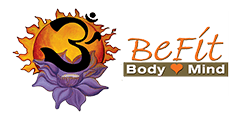UJJAYI BREATH
Ujjayi literally means “victoriously uprising” or “victory from expansion”, which refers to the upward movement of prana.
Ujjayi breathing has two distinctive characteristics:
1. An action at the throat to produce the Ujjayi sound
2. An evenness of flow of the breath from beginning to end – both on the inhalation and the exhalation.
The Ujjayi Sound
The ujjayi sound is made by toning the back of the throat and epiglottis as if you were whispering the sound of ‘haaaaa’ in the throat – a breathy sound like the one made when you fog a mirror with your breath. The difference is Ujjayi sound is made while breathing through your nose on both the inhalation and the exhalation.
While making this sound, close your mouth and feel the breath rise upward at the back of your throat. Once you understand how to work the throat, keep the throat the same and inhale making the same sound. BE CAREFUL NOT TO CONSTRICT THE THROAT SO MUCH THAT IT IMPOSES A PULLING OR LABORED FEELING ON THE BREATH. As you are working on the action at the throat, pay attention to making a doming effect at the back of the throat (much like when you yawn) even while you narrow the passage way for your breath to create the sound.
The point of making the sound is not the sound itself, and a loud sound is not necessarily a sign of a better Ujjayi breath. It’s importance lies in the effects of the action at the throat, feeling your breath at the back of your throat activates the diaphragm. Helping us use the diaphragm to breathe instead of the external muscles (chest and intercostals).
- For comparison, sniff. Notice how with a sniff we pull the breath in our body with more effort. Subconsciously many of us breathe this way.
- See how the action of breathing is much more in the diaphragm and back of the body, rather than the upper chest, and you have a feeling of expansion with the breath rather than ‘pulling’ at the breath. This expansive quality of breathing with the diaphragm is the essence of the Ujjayi breath.
A good Ujjayi sound is thus an indication of both good alignment in one’s posture, and good and efficient action in one’s breathing.
Evenness of Flow
Normally our breath begins fast and then tapers off toward the top of the inhalation or bottom of the exhalation. Regulating the pace of each breath requires greater restraint at the beginning of each inhale because we tend to come into the inhale more quickly and then peter out at the end. By the same token, this demands greater effort at the end of each exhale, when we tend to slow down. Try to make the transition from the exhale to the inhale without speeding up the breath, so your inbreath and outbreath become relaxed and more equally relaxing.
In Summary keep the sound of the breath steady and even from beginning to end, and loud enough for you to hear refinements in your breath –but not so loud as to cause tension or pressure in your throat or head.
Breathing from the Inside Out.
One of the subtleties of breathing is to be able to coordinate the expansion and contraction of the lungs (including the diaphragm) or ‘inner body’ with the expansion and contraction of the ribs and ‘outer body’ (including the intercostals <muscles between the ribs>, chest, and neck muscles).
Notice after exhaling fully, when you begin to inhale, your lungs expand inside your chest with the action of the diaphragm clearly before the muscles of the ribs and chest are activated; you can feel the point at which your lungs come into contact with your ribs, and your ribs begin to actively expand at the mid-chest. For your breath to be comfortable at this point, your ribs must continue to expand on the ‘outside’ at the same rate as your lungs expand on the ‘inside’. Much of the discomfort some may experience while breathing happens when this does not.
What to do when this is the case? Asana practice (to stretch the ‘outer body’ . . . and more pranayama.
Reference: “Refining the Breath, The Yogic Practice of Pranayama” by Doug Keller
